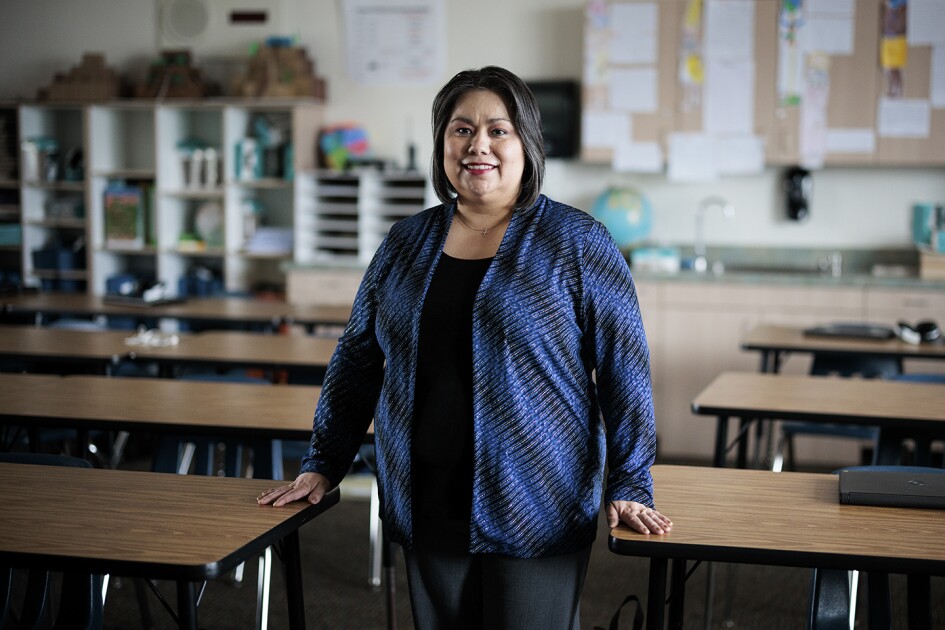Next week, my classroom will be transformed into a 21st-century, technologically rich teaching and learning environment. As part of our school pilot program, worn walls and generations-old graffitied desks will be painted over, students will have personal computing devices, and we will have a classroom smartboard, accompanied by a projector, document reader, and sound system.
I’m still figuring out exactly what a “tech” classroom is, but what I know for sure is that I want it to be an outside-inside transformation that extends beyond classroom tools and into the fabric of teaching and learning in our space.
Technology isn’t a computer; it’s a way of interacting with oneself and the world. It’s a space where complex and dynamic communication patterns emerge that challenge who we are, what we know and how we make sense of the world. As teachers, we are learners in this world in the same way that our students are. We are partners in a dialogue about how we create meaning in the world around us and where we fit into it. Within this space exists an exciting opportunity to be bold and take risks that have the potential to transform the function and scope of teaching and learning spaces.
More than anything, I’ve found this time to be an opportunity to revisit what I want learning to look like in my classroom and how best to leverage technology and communication spaces to achieve that ideal. As I contemplate my future classroom, these five key considerations keep coming up for me:
1. Technology is a vehicle to improve student learning, not an end in itself. I want to remember to focus on the process over the goal. Technology is only a tool to achieve deeper content knowledge and skill capacity—not the goal itself. Meaningful learning will happen as a result of what we do with the technology, not simply because of its presence in the classroom.
2. Technology is a means to engage students and bring greater relevance to what they are learning. It’s a way of hooking students into topics and themes, inviting them to use a communicative language and forum that excites them, and aligns with their generational world.
3. Technology supports diverse learners by allowing greater differentiation of tools to address language needs and learning styles. It provides a forum for communication through which all learners can dialogue, question, analyze, evaluate, and create (including the various other tasks on Webb’s Depth of Knowledge Wheel).
4. Technology extends learning outside the classroom through interaction with a rich plethora of resources, people and spaces. It serves to blur the lines between the classroom and the world by magnifying student voices and connecting them with others in new and different ways.
5. Technology engages students in the transformation process. Technology can make students feel more invested in their own learning, inviting them to metacognitively consider their own learning needs and styles.
Though the Common Core State Standards point to the importance of technology use, too many schools and districts have limited access to reliable technology. This has hindered technology transformations that should be commonplace if we are to prepare our youth for the careers and futures they are stepping into. The gap potentially creates a space for thoughtful partnerships with the business community, as well as an opportunity to extend a dialogue of how to realign existing family and community resources.
As I design my new classroom, I’ve come to realize that regardless of how much “technology” a classroom has, it isn’t the technology that is the most important component—but rather how we realign physical and virtual learning spaces to fit student needs. We also need to consider how we engage with our colleagues, students and families in discussions about what, how and why students are learning. And that doesn’t cost a dime.
As I gear up for this exciting new phase of my teaching practice, I’d love to hear from you. What have been your experiences with techology in the classroom? What tips and challenges can you share?
And here are a few technology resources I’ve found useful at this stage of the redesign process. What are your favorite resources and uses of technology in the classroom?
- Weebly: Create a free classroom website and blog.
- Edmodo: Social learning community to connect teachers, students, and parents.
- Glogster: Explore and create educational content online.
- Office of Educational Technology: Government site for technology resources and policy.
- Classroom Aid Technology Resources: Various resources compiled here, including this Bloom’s Taxonomy Chart that classifies tech resources according to learning application.
- There’s No App For Good Teaching: TED article on incorporating technology into teaching.







